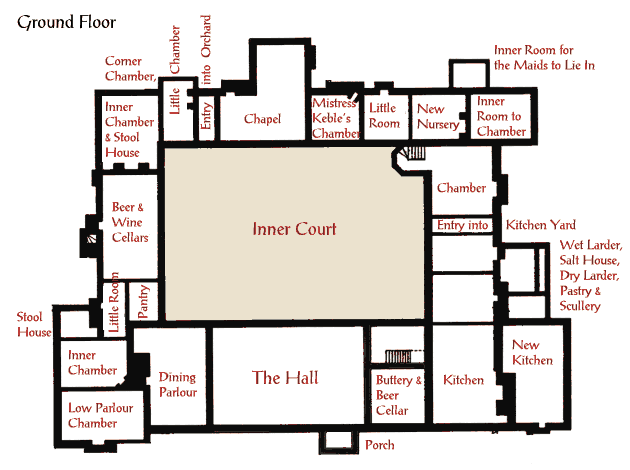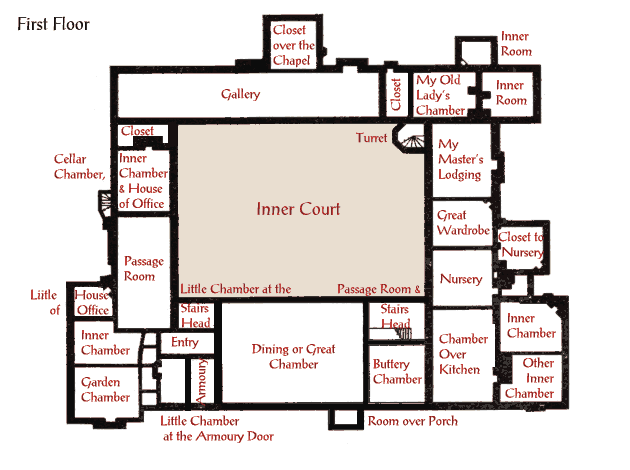




These plans represent the main Hall in the period 1550-1600. Other buildings on the property included a gatehouse, porter's lodge, bakehouse, brewery, milk-house, stable, mews, slaughter-house, granary, wash-house, fish-house, still-house, and chambers for the majority of the servants.
A house of office is a privy, and a closet is any small private room, not necessarily used for storing clothes. Mistress Keble is Sir William's good mother, or mother-in-law.
These drawings are based on floor plans in Tudor Secretary by F.G. Emmison, Harvard, 1961. Post-1600 alterations have been omitted. - PKM
![]() Ingatestone Hall Official Web Site
Ingatestone Hall Official Web Site
![]() Household Management
Household Management
![]() Domestic Details
Domestic Details




27 October 2009 pkm